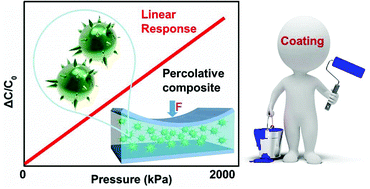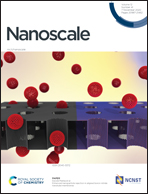Rational design of flexible capacitive sensors with highly linear response over a broad pressure sensing range†
Abstract
Flexible capacitive pressure sensors have many important applications but usually exhibit a highly non-linear response as the sensitivity drops dramatically towards high pressure. Herein, we propose a novel strategy to achieve high linearity over a broad sensing range by using percolative composites as the dielectric layer. The linear response is attributed to the fast increase in dielectric constant that can compensate for the sensitivity drop caused by the decreased compressibility during compression. An analytical model is established to predict the linearity by coupling the percolation theory and Mooney–Rivlin equation. Based on the model, a capacitive pressure sensor using a spiky nickel/polydimethyl siloxane composite as the dielectric layer is fabricated as a demonstration and exhibits excellent linearity (R2 = 0.999) up to 1.7 MPa. In addition, owing to the nature of the polymer composite, its dispersion can be conformally coated on surfaces with complex shapes or be molded into films with surface microstructures to achieve a unique combination of high sensitivity and linear response over a wide pressure sensing range.



 Please wait while we load your content...
Please wait while we load your content...